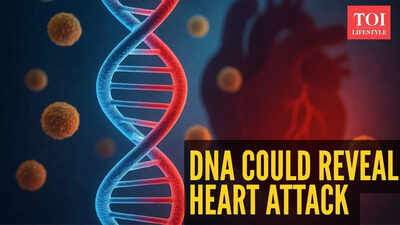ARTICLE AD BOX

In a major scientific breakthrough, researchers have created the first comprehensive genetic resource to identify people at risk of dangerously high cholesterol and heart disease, even if their cholesterol levels appear normal.
The international study, led by scientists from the University of Pittsburgh School of Medicine, mapped more than 17,000 genetic variants of the LDL receptor (LDLR) gene, revealing how tiny DNA changes can influence the body’s ability to clear “bad” cholesterol from the bloodstream. The findings, published in the journal Science (2025), could transform how clinicians predict and prevent heart attacks.
Mapping the genetic roots of cholesterol
Heart disease remains the leading cause of death in the United States, claiming nearly 700,000 lives each year. While diet and lifestyle play a role, a significant portion of cardiovascular risk lies hidden in our genes. The study, titled “The Functional Landscape of Coding Variation in the Familial Hypercholesterolemia Gene LDLR” provides the most detailed insight yet into how inherited variations affect cholesterol regulation.The LDLR gene encodes a receptor that removes low-density lipoprotein (LDL), commonly known as “bad cholesterol”, from the blood. When this receptor is impaired, cholesterol accumulates in the arteries, increasing the risk of atherosclerosis, heart attacks, and strokes.
What this means for patients: spotting hidden heart risks early
For millions of people with seemingly normal cholesterol levels, the danger of heart disease often goes unnoticed until it is too late. This new genetic mapping resource helps doctors identify individuals who carry harmful variations in the LDL receptor (LDLR) gene long before symptoms appear.
By analysing a patient’s DNA, clinicians can now assess the likelihood of developing dangerously high cholesterol and begin preventive treatments early, such as lifestyle changes or cholesterol-lowering medication.
This proactive approach could dramatically reduce the number of heart attacks and strokes, marking a major step toward personalised, genetics-based heart care.
The power of large-scale genetic mapping
A team led by Dr Frederick Roth, Professor of Computational and Systems Biology at the University of Pittsburgh, has made a major breakthrough in understanding how our genes affect heart health.
The researchers looked at nearly 17,000 different versions (or variants) of a gene called LDLR, which plays a key role in controlling “bad” cholesterol (LDL) in the blood.Using advanced genetic testing and computer models, they studied how each tiny change in the LDLR gene affects the body’s ability to remove LDL cholesterol from the bloodstream.“The ability to classify these variants is crucial,” explained Dr Roth.
“Even if someone’s cholesterol levels look normal, certain genetic changes can still put them at a higher risk of a heart attack.”This huge mapping project has now created a comprehensive database that shows how each version of the LDLR gene behaves — ranking them by how well they clear cholesterol from the blood. For doctors, this new resource could become a powerful tool to help identify people with hidden genetic risks for heart disease.
From lab data to life-saving insights
The findings could have a real and immediate impact on patient care. Many people today take genetic tests to understand their health risks, but sometimes the results show variants of uncertain significance — meaning doctors can’t tell whether those mutations are harmful or harmless.According to co-author Dr Dan Roden of Vanderbilt University Medical Center, the team’s new “variant scores” could help solve that problem.
Their system can predict which gene changes are likely to cause familial hypercholesterolemia (FH) — a hereditary condition that causes dangerously high cholesterol levels — potentially leading to ten times more accurate diagnoses than before.“New, unclassified genetic changes show up all the time,” said Dr Roden. “Until now, we didn’t always have enough evidence to know what they meant for a patient’s health.
These scores can help doctors spot heart risk earlier and begin treatment before any damage occurs.”In simple terms, this research bridges the gap between lab science and everyday medicine, helping doctors use genetic information to protect more patients from heart disease — before it’s too late.
A global effort to decode disease
This cholesterol-focused project is part of the Atlas of Variant Effects Alliance (AVEA), a global initiative co-founded by Dr Roth.
The alliance brings together more than 500 scientists across 50 countries, all working to catalogue the functional impact of genetic variants that contribute to inherited disorders.Similar to how mapping mutations in the BRCA1 gene has transformed early cancer detection, this project could dramatically improve heart disease prediction by identifying those genetically predisposed to high LDL cholesterol long before clinical symptoms develop.

 5 hours ago
4
5 hours ago
4







 English (US) ·
English (US) ·